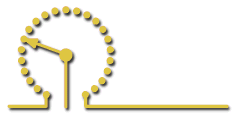 -An Expanded Chronology of Resistor Types used in Goldpoint Stepped Attenuators: -An Expanded Chronology of Resistor Types used in Goldpoint Stepped Attenuators: |
| In 1995, Goldpoint Level Controls began offering Ladder type
stepped attenuators world-wide over the then fairly new internet. The
company had sprung into existence due to the high demand for these stepped
attenuators - which had spread by word-of-mouth from a very successful
"monthy project" in a vacuum tube enthusiast club in San
Francisco. |
| Over the next 7
years we added Shunt and the Series type stepped attenuatoprs to our
product offerings. Back then it was considered that both Ladders and
Shunts generally had better sound. But Ladders were twice as expensive
due to needing twice as many resistors, switch contacts and wafers -
and can produce pops/clicks while turning them up/down. And Shunts can
do strange things to the sound with impedance changes when turning them
up and down. |
| Most of the
resistors used throughout the audio industry are inexpensive 5%
tolerance carbon type, or at most 1%, thick film Ruthenium metal film
type. Pre 2003, when you wanted the best sounding Goldpoint stepped
attenuators we could offer - and could pay for it - we used Vishay bulk
foil, Audio Note Tantalum, or IRC Nickel-Chromium (Nichrome) metal film resistors to provide even better clarity than our standard
(excellent) German made Roederstein resistors (Ruthenium
but great sounding). Back then we spent time daily
talking with audio enthusiast customers about different resistor types and brands and their
varying sound qualities, including carbon resistor types. |
In 2003 we discovered why people had been raving about the KOA resistor brand we occasionally employed. These were fairly
inexpensive, but turned out to be mostly Nickel-Chromium (Nichrome) metal film - and that's why people raved about their
sound qualities so much. Then we found out
that the Dale RN55/RN60 resistors are Nichrome too,
which we used exclusively for a few years after the Roedersteins became
hard to get. Lastly, in 2003 that we found out that the expensive (over
$1 each back then) IRC 0.1% tolerance RC55 resistors are also Nichrome
type - and these had the best sound qualities we could identify amongst
all resistor types - period.
|
What happened in 2003 is that we started using precision
Nichrome SMD resistors on all of our stepped attenuator types:
Series, Ladders, and Shunts. And then we found that we really could no
longer easily tell the difference between the sound qualities of our
own Series, Ladders and Shunts. This turned out to be due to the new
SMD Nichrome resistors we had begun using. And so we dropped the Ladders
and Shunts from our offerings, along with their inherent problems.
As the precision SMD Nichromes are so transparent sounding, we decided "why use
anything else" - because even the Series type stepped attenuators were
totally transparent sounding - the best of all worlds for price, reliability and overall performance, including unassailable sound quality.
|
| Now we recommend only Nickel-Chromium thru-hole resistors to our
customers when building their own custom
stepped attenuators onto our Goldpoint V24C or V47C blank boards. see at:
https://goldpt.com/r_series.html |
|




